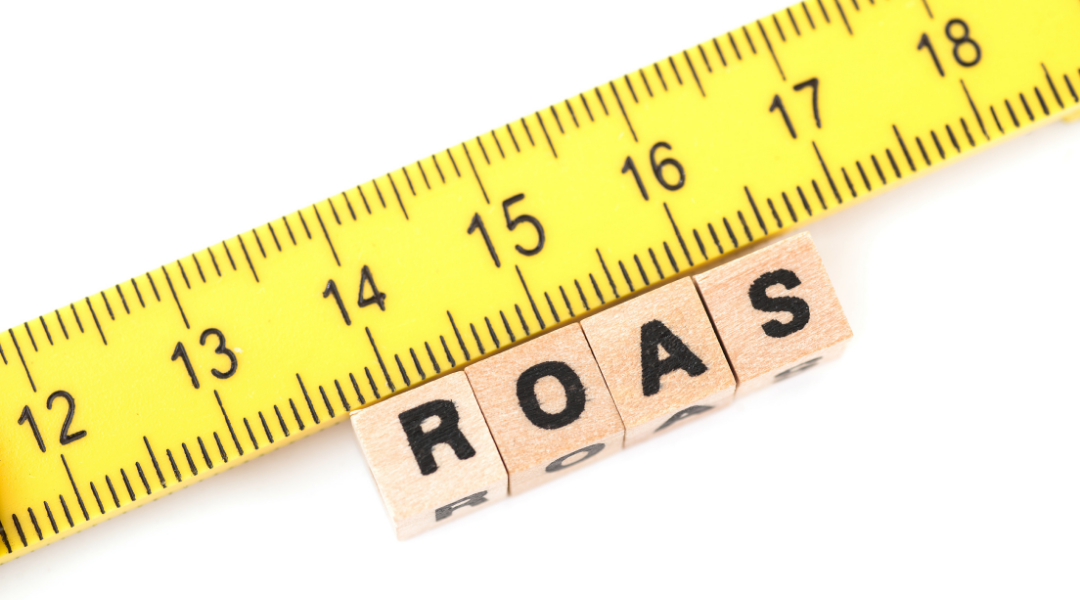The term ROAS is short for return on ad spend. The ROAS formula will help you decide where to spend ad dollars.
When it comes to how you invest your limited marketing dollars and spend money on ad campaigns, it is vital that you allocate to channels that provide a tangible return. That’s why it is so important that you understand what ROAS is and how to leverage the ROAS formula.
What is ROAS?
The term ROAS is short for return on ad spend. Specifically, it measures how much money you get back for every dollar you spend on a specific ad. Good ROAS calculations can help you optimize your advertising, boost your e-commerce profits, increase your profit margin, and make sure you are getting a good return on investment for your digital marketing.
Why is ROAS Important?
Calculating your ROAS is very important for determining your overall profit margin and for many PPC ads, such as Google ads campaigns, Facebook ads, ads on Amazon, LinkedIn, or other online advertising.
Your ROAS is critical for determining the success of advertising efforts, as it can help you determine if the return on advertising spend is generating the amount of revenue you need to justify the expense of the digital advertising campaign.
How Do You Calculate ROAS?
You can calculate your ROAS metric by doing the following:
- First, figure out how much your ad cost, then figure out how much revenue you generated from the ad.
- Divide the revenue generated by the cost of ads. You can take that number and multiply it by 100 to determine the percentage.
A high ROAS percentage means that an ad is doing well, while a low ROAS percentage means that the advertisement is underperforming. if your ROAS is below 100%, you are losing money on the advertisement.
Here’s an Example Using the ROAS Formula
Let’s say you spend $100 on an advertisement, and it generates $1,000 in revenue for you. Your ROAS would be 1000%, making this a highly effective advertisement.
However, let’s say you spent $100 and only generated $50. Your ROAS would be 50% – and this would be a loss of revenue.
What Should Your ROAS % Be?
At an absolute minimum, you want to make sure that your target ROAS is 100%. This would mean that you are at least breaking even on an ad and not losing money on it. However, breaking even is not what you are going for in an advertisement: You want to make a profit and make sure that the time and effort behind your advertisement were worth it.
As such, you will want to calculate your target ROAS ahead of time. Every industry and business has its own ROAS metrics, and your best bet is to work with industry professionals ahead of time, thus ensuring that you know where your ROAS should be.
How Do You Calculate Breakeven ROAS?
You calculate breakeven by running the ROAS formula and determining if you are at over 100%. 100% means that you got all of your money back. More than 100% is a profit, and less than 100% is a loss.
What is the Difference Between ROAS and CPA?
Your ROAS is a specific determination of how much money you get back for an advertising campaign. CPA is short for Cost Per Action. It is a pricing model where you will pay for every action taken. That action varies from ad to ad and may consist of a click, a video watch, an Email sign-up, or more.
With that said, there are significant differences in the models. ROAS is used to calculate profit. CPA is used to calculate the cost.
What is Better? ROAS or CPA?
To be clear, there is no “better” in terms of the difference between ROAS and CPA, as they measure different things, and each of these metrics can be very useful for your business.
ROAS can be better for determining the total revenue generated from an ad. It is also often better for determining how ads increase or decrease profit margins. Keeping a close eye on ROAS across multiple campaigns will help you allocate your advertising dollars in an efficient manner.
CPA can help determine the expenses that are associated with an ad. Calculating these overall expenses will unquestionably impact your marketing strategies and the ad groups you use — particularly if you are an eCommerce or startup business with limited resources.
However, it is important to realize that both of these metrics have a great deal in common. Both can be compared to appropriate benchmarks in order to help inform your marketing budget. Both can show how your marketing efforts are impacting your bottom line. Both are vital marketing metrics and should be used to analyze the cost of ads and your overall bidding strategy.
What is the Limitation of the ROAS Formula?
While ROAS can be a highly useful metric, it isn’t perfect, and it leaves out some very important information. For example, ROAS may help you determine revenue generation, but it tells you nothing about other important marketing metrics, including conversion rates or click-through rates. It also is silent about the expenditure side of ad spending, missing important metrics like cost per click (CPC). As such, it should not be viewed as an all-encompassing metric for determining the effectiveness of your ad spend or strategy.
How Can you Optimize Google Ads for ROAS?
Google lists a few suggestions on how to optimize your ROAS. These include:
- Use their recommended prices and suggestions for keywords.
- Use historical data of prior conversions to set your target ROAS.
- Explore bid limits to ensure that you are not overbidding for an advertisement.
ROAS can be a highly useful tool, and while it does have its limitations, you should be sure to explore it for your marketing efforts.

